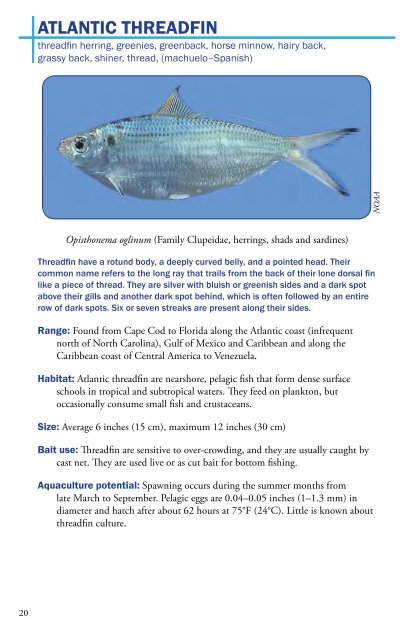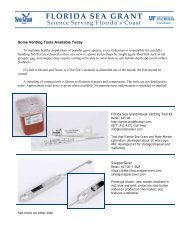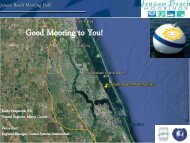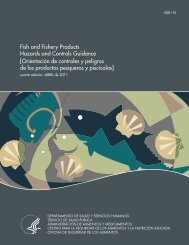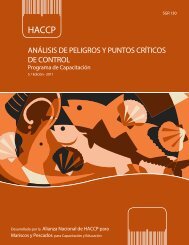MARINE BAITFISH
Growing Marine Baitfish - Florida Sea Grant
Growing Marine Baitfish - Florida Sea Grant
Create successful ePaper yourself
Turn your PDF publications into a flip-book with our unique Google optimized e-Paper software.
ATLANTIC THREADFIN<br />
threadfin herring, greenies, greenback, horse minnow, hairy back,<br />
grassy back, shiner, thread, (machuelo–Spanish)<br />
NOAA<br />
Opisthonema oglinum (Family Clupeidae, herrings, shads and sardines)<br />
Threadfin have a rotund body, a deeply curved belly, and a pointed head. Their<br />
common name refers to the long ray that trails from the back of their lone dorsal fin<br />
like a piece of thread. They are silver with bluish or greenish sides and a dark spot<br />
above their gills and another dark spot behind, which is often followed by an entire<br />
row of dark spots. Six or seven streaks are present along their sides.<br />
Range: Found from Cape Cod to Florida along the Atlantic coast (infrequent<br />
north of North Carolina), Gulf of Mexico and Caribbean and along the<br />
Caribbean coast of Central America to Venezuela.<br />
Habitat: Atlantic threadfin are nearshore, pelagic fish that form dense surface<br />
schools in tropical and subtropical waters. They feed on plankton, but<br />
occasionally consume small fish and crustaceans.<br />
Size: Average 6 inches (15 cm), maximum 12 inches (30 cm)<br />
Bait use: Threadfin are sensitive to over-crowding, and they are usually caught by<br />
cast net. They are used live or as cut bait for bottom fishing.<br />
Aquaculture potential: Spawning occurs during the summer months from<br />
late March to September. Pelagic eggs are 0.04–0.05 inches (1–1.3 mm) in<br />
diameter and hatch after about 62 hours at 75°F (24°C). Little is known about<br />
threadfin culture.<br />
20


